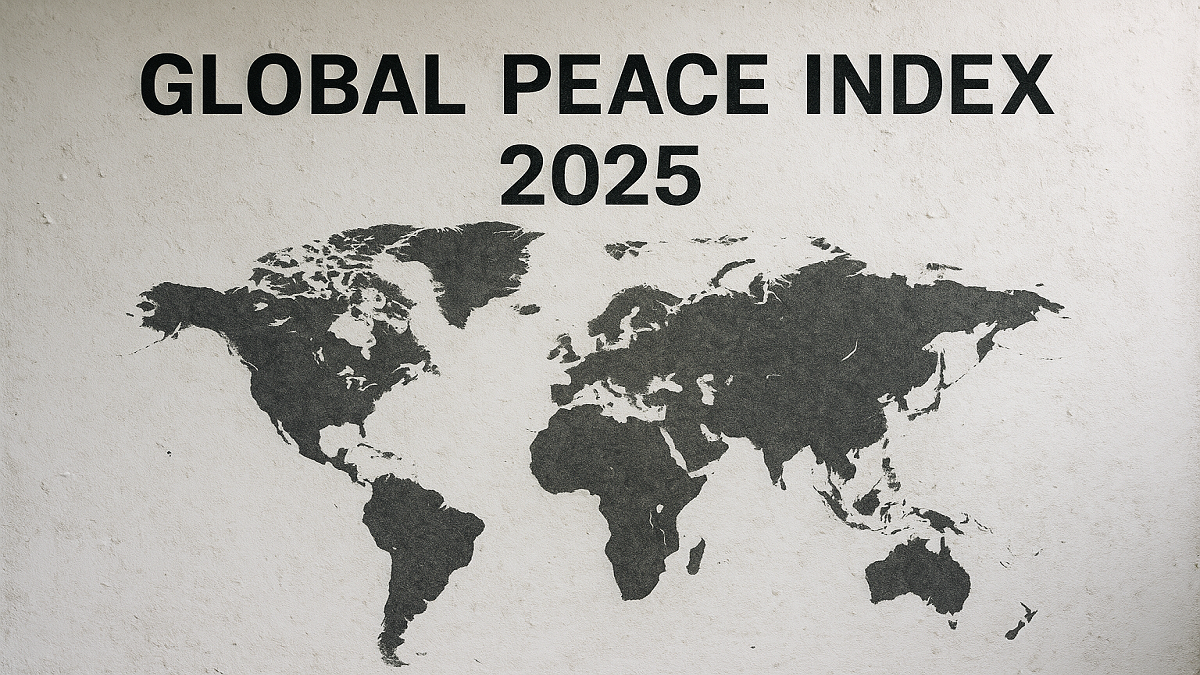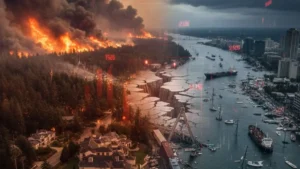The Global Peace Index (GPI) 2025, now in its 19th edition, remains the world’s leading measure of national and regional peacefulness. Developed by the Institute for Economics and Peace (IEP), the index offers invaluable insight into the peacefulness of 163 countries, covering 99.7% of the global population. In a world experiencing an uptick in geopolitical instability, the GPI serves as a crucial indicator of current global trends in conflict, safety, and militarisation.
What is the Global Peace Index?
The Global Peace Index is an annual quantitative analysis that evaluates peace based on 23 indicators across three main domains:
- Societal Safety and Security
- Ongoing Domestic and International Conflict
- Degree of Militarisation
Published by the Institute for Economics & Peace (IEP)—a non-partisan, independent think tank based in Sydney—the GPI has become a widely respected benchmark for governments, researchers, and institutions working towards sustainable peace and security reforms.
Key Parameters of Global Peace Index 2025
| Parameter | Details |
|---|---|
| What is GPI? | Composite index measuring peace using 23 indicators across 3 domains |
| Publisher | Institute for Economics & Peace (IEP) |
| Edition | 19th (Year 2025) |
| Total Countries | 163 |
| Top Ranked Country | Iceland (Rank 1, Score: 1.095) |
| India’s Rank (2025) | 115th (Score: 2.229) |
| Global Peace Trend | Declined by 0.36% from 2024 |
| Countries Improved | 74 |
| Countries Deteriorated | 87 |
| Lowest Ranked Country | Russia (Rank 163, Score: 3.441) |
| Worst Region | South Asia |
| Economic Cost of Violence | $19.97 trillion (11.6% of global GDP) |
| Most Deteriorated Indicator | External Conflicts Fought |
| Most Improved Indicator | Perceptions of Criminality |
How the GPI Score is Calculated
The GPI Score is derived using a weighted system of 23 indicators that reflect both qualitative assessments (e.g., political stability, perceptions of criminality) and quantitative metrics (e.g., homicide rates, number of internal conflicts). These are aggregated into a score between 1 (most peaceful) and 5 (least peaceful).
A lower GPI score means a country is more peaceful and stable. Factors considered include:
- Internal & external conflict duration
- Terrorism impact and homicide rate
- Political instability and repression
- Military expenditure and arms imports
- Relations with neighbouring states
Global Peace Index 2025: General Trends and Highlights
Deteriorating Global Peace
2025 marks the 13th decline in global peace over the past 17 years. The average global peacefulness dropped by 0.36%, with 87 countries showing deterioration and 74 countries showing improvement.
Rise in Conflicts
There are currently 59 active state-based conflicts, the highest since World War II, resulting in over 152,000 deaths in 2024.
Rising Militarisation
An increase in military spending as a percentage of GDP was observed in 84 countries, indicating growing global insecurity.
Top 10 Most Peaceful Countries in 2025
Despite widespread unrest, some nations maintain high levels of peace:
| Rank | Country | GPI Score | Region |
|---|---|---|---|
| 1 | Iceland | 1.095 | Europe |
| 2 | Ireland | 1.260 | Europe |
| 3 | New Zealand | 1.282 | Oceania |
| 4 | Austria | 1.294 | Europe |
| 5 | Switzerland | 1.294 | Europe |
| 6 | Singapore | 1.357 | Asia |
| 7 | Portugal | 1.371 | Europe |
| 8 | Denmark | 1.393 | Europe |
| 9 | Slovenia | 1.409 | Europe |
| 10 | Finland | 1.420 | Europe |
Most Peaceful Nation: Iceland
Iceland has retained its position as the world’s most peaceful country since 2008, credited to its low crime rates, stable politics, and lack of military forces.
Least Peaceful Countries in 2025
The bottom of the GPI ranking highlights ongoing crises:
| Rank | Country | GPI Score | Region |
|---|---|---|---|
| 163 | Russia | 3.441 | Eurasia |
| 162 | Ukraine | 3.434 | Europe |
| 161 | Sudan | 3.323 | Africa |
| 160 | DRC | 3.292 | Africa |
| 159 | Yemen | 3.262 | Middle East |
Least Peaceful Nation: Russia
Due to the prolonged war in Ukraine, sanctions, and internal political repression, Russia ranks last, followed by Ukraine.
India’s Performance in Global Peace Index 2025
India ranks 115th out of 163 nations, with a GPI score of 2.229, reflecting a 0.58% improvement over the previous year. India’s trajectory has shown gradual improvement over recent years:
- 2025: Rank 115
- 2024: Rank 116
- 2023: Rank 126
- 2020: Rank 139
- 2019: Rank 141
Despite internal unrest, cross-border tensions, and militarisation, India has seen improvements in crime perception, political stability, and terrorist impact indicators.
India vs South Asia
While South Asia remains the least peaceful region, India has outperformed several regional neighbours:
| Country | GPI Rank |
|---|---|
| India | 115 |
| Bangladesh | 123 |
| Pakistan | 144 |
| Afghanistan | 158 |
Regional Peacefulness Analysis
Western & Central Europe
Still the most peaceful region globally, but facing gradual decline due to terrorism fears, political protests, and economic pressure.
Middle East & North Africa (MENA)
Remains the least peaceful region for the tenth year, marred by civil wars and political instability.
South Asia
Saw the largest decline, especially due to situations in Pakistan, Bangladesh, and Afghanistan.
Asia-Pacific
Mixed outcomes: New Zealand and Singapore remain peaceful; others saw declines due to geopolitical tensions.
Sub-Saharan Africa
Still plagued by long-running conflicts, particularly in Sudan and Democratic Republic of the Congo.
South America
The only region to show improvement in 2025, due to democratic transitions and policy reform in countries like Peru.
North America
While some safety indicators improved, firearm-related violence and political polarisation remain major issues.
Economic Impact of Violence in 2024
The economic cost of violence reached $19.97 trillion, equal to 11.6% of global GDP. This includes costs associated with:
- War and conflict
- Internal security
- Policing
- Military expenses



 NITI Aayog Report Hails Gujarat Biotechn...
NITI Aayog Report Hails Gujarat Biotechn...
 Ahead of Nadella and Pichai: Jayshree Ul...
Ahead of Nadella and Pichai: Jayshree Ul...
 Wildfires and Natural Disasters Cost the...
Wildfires and Natural Disasters Cost the...







